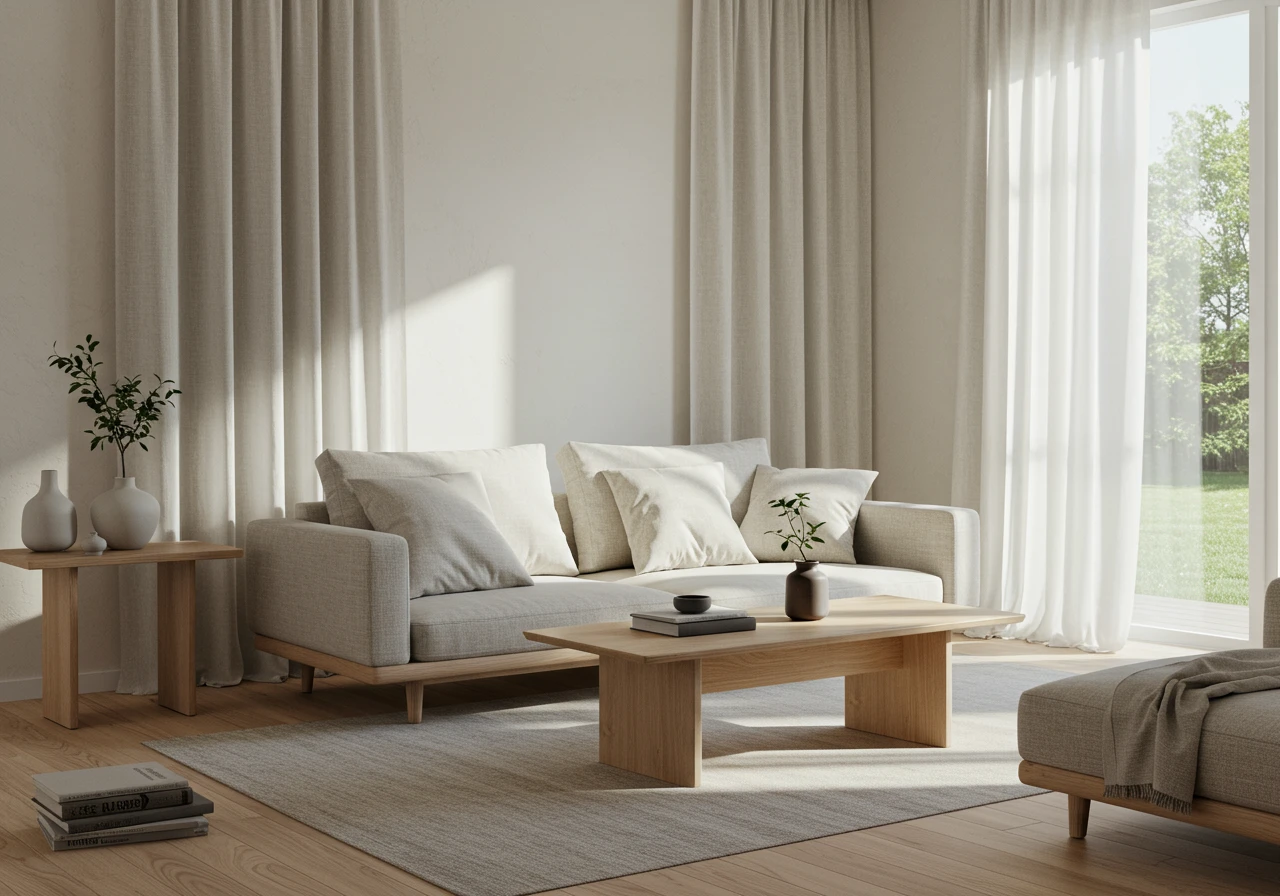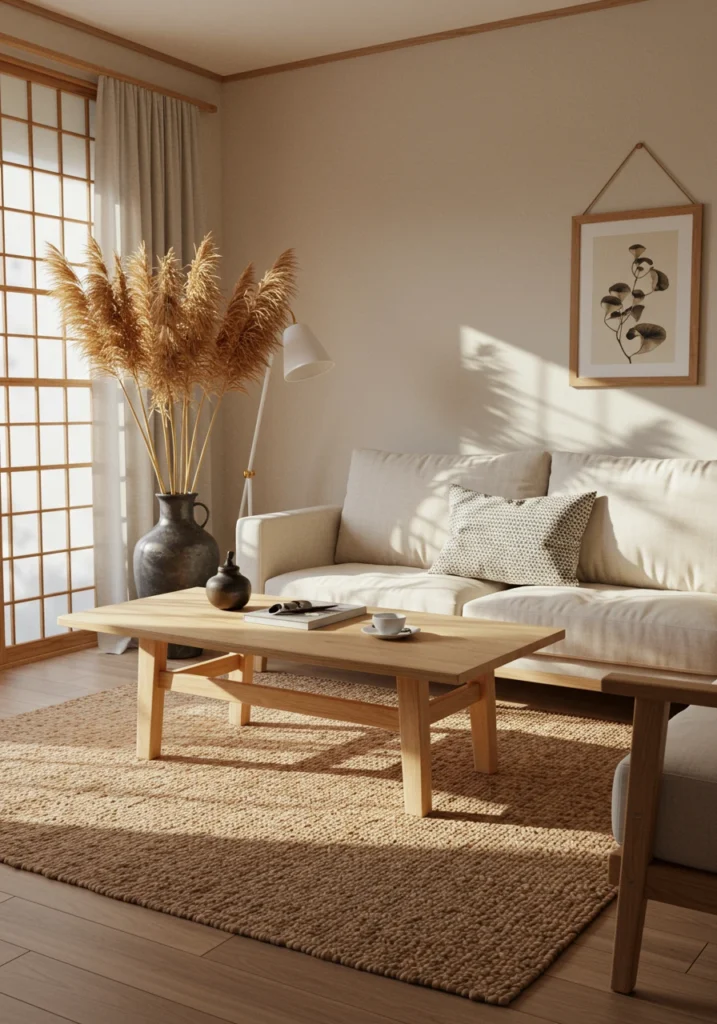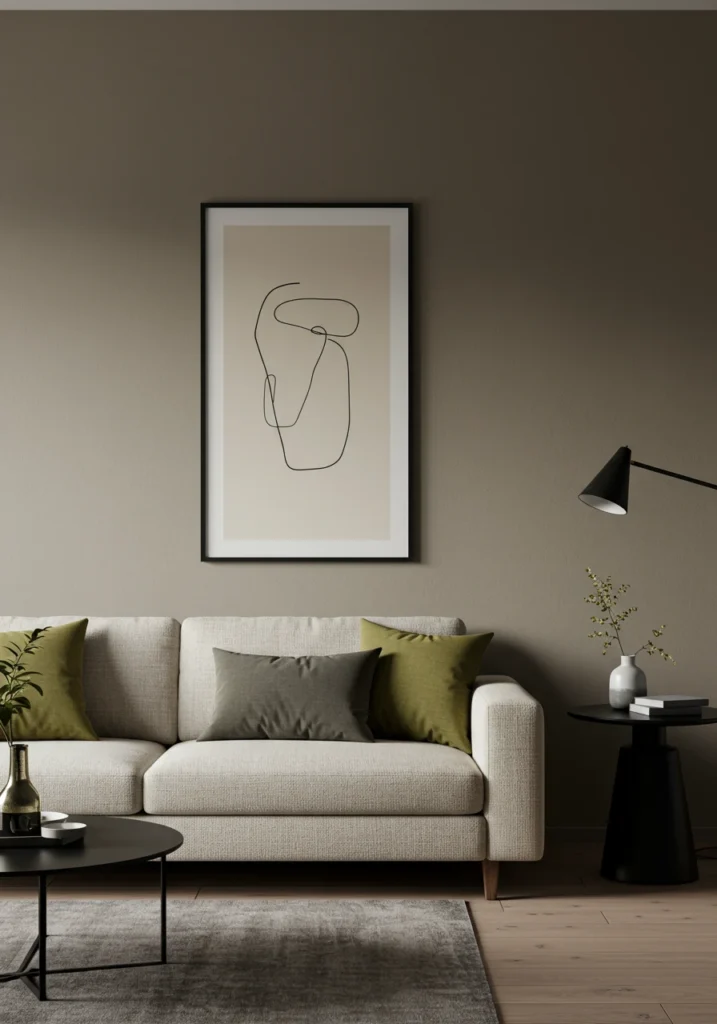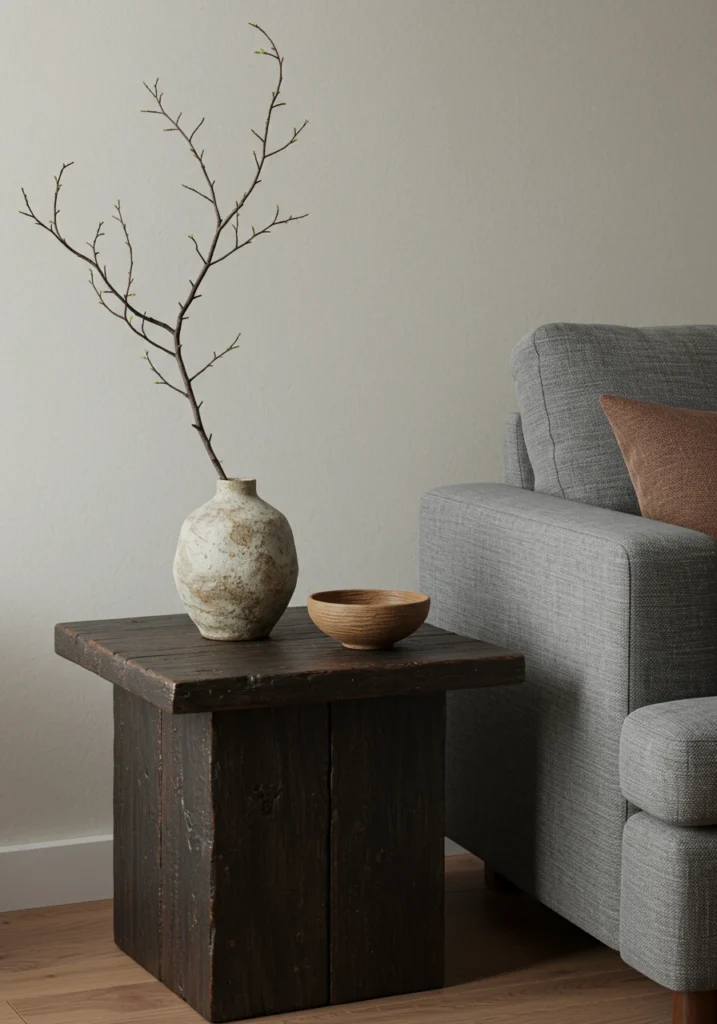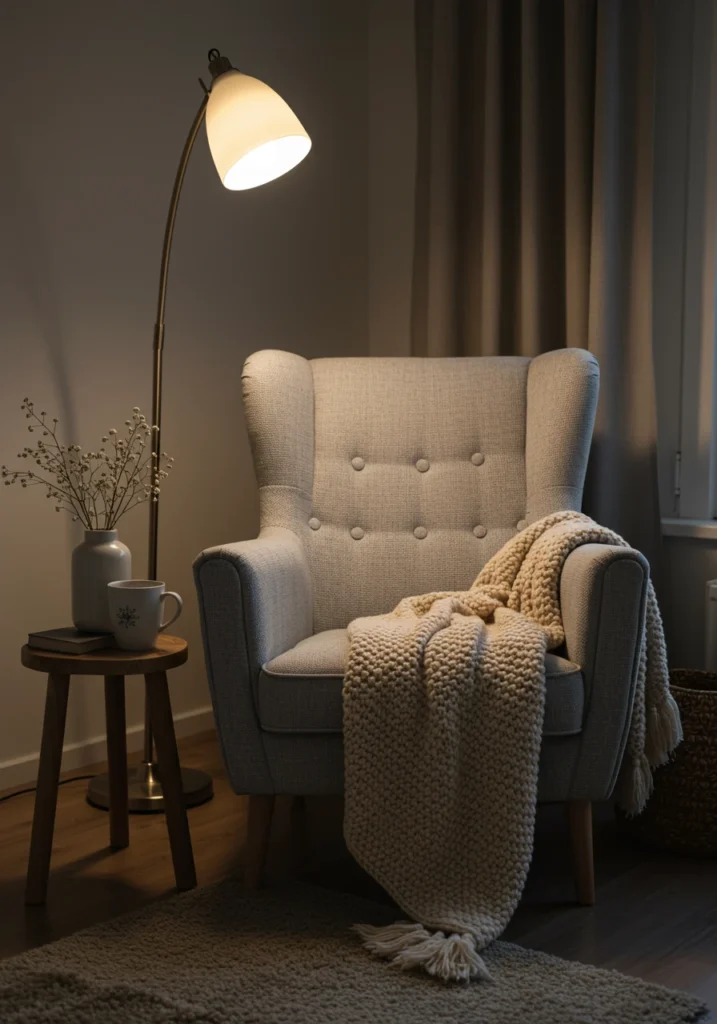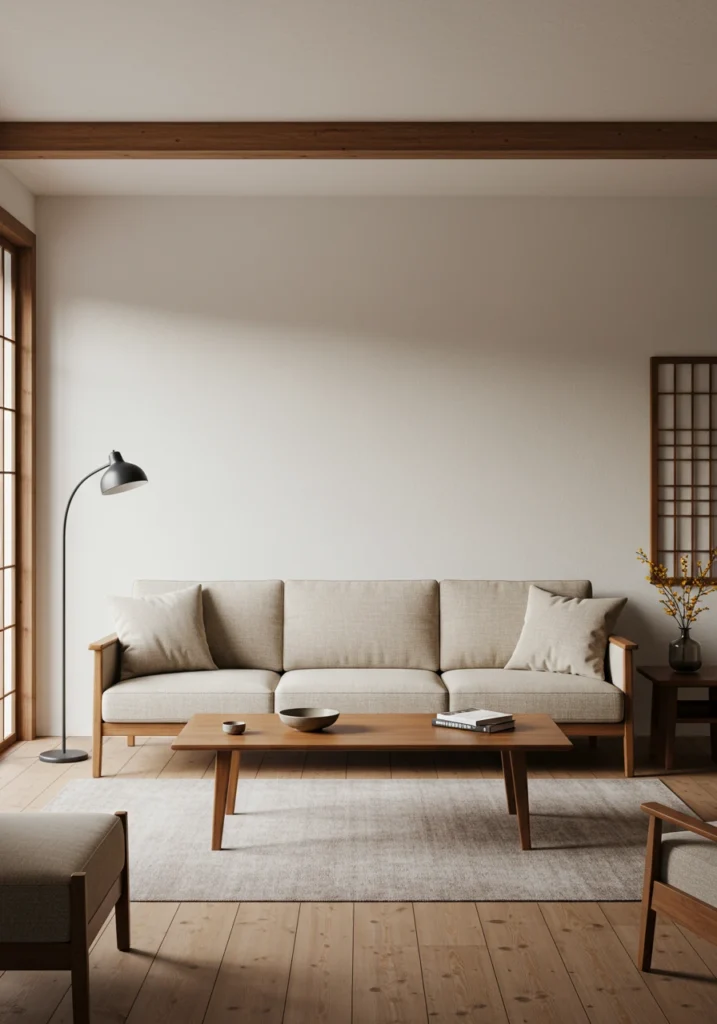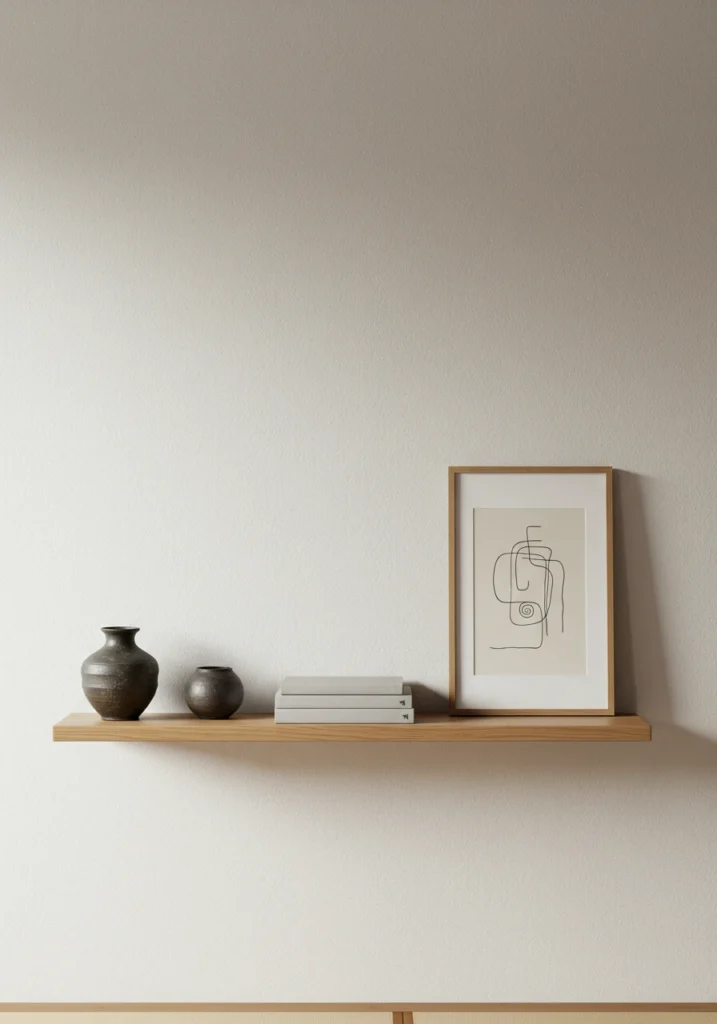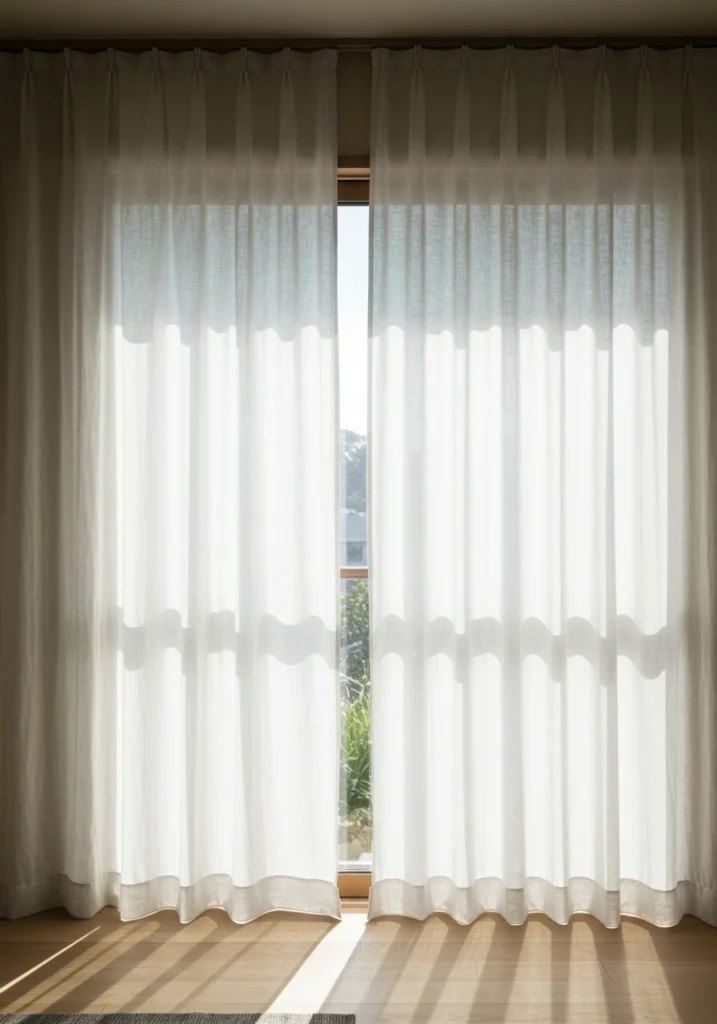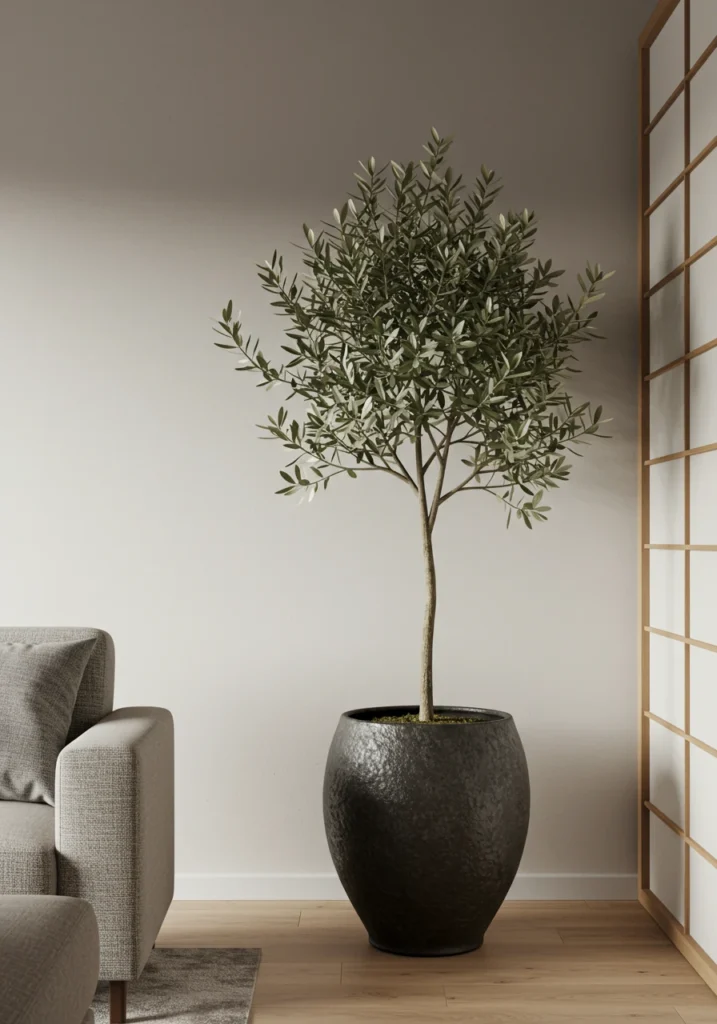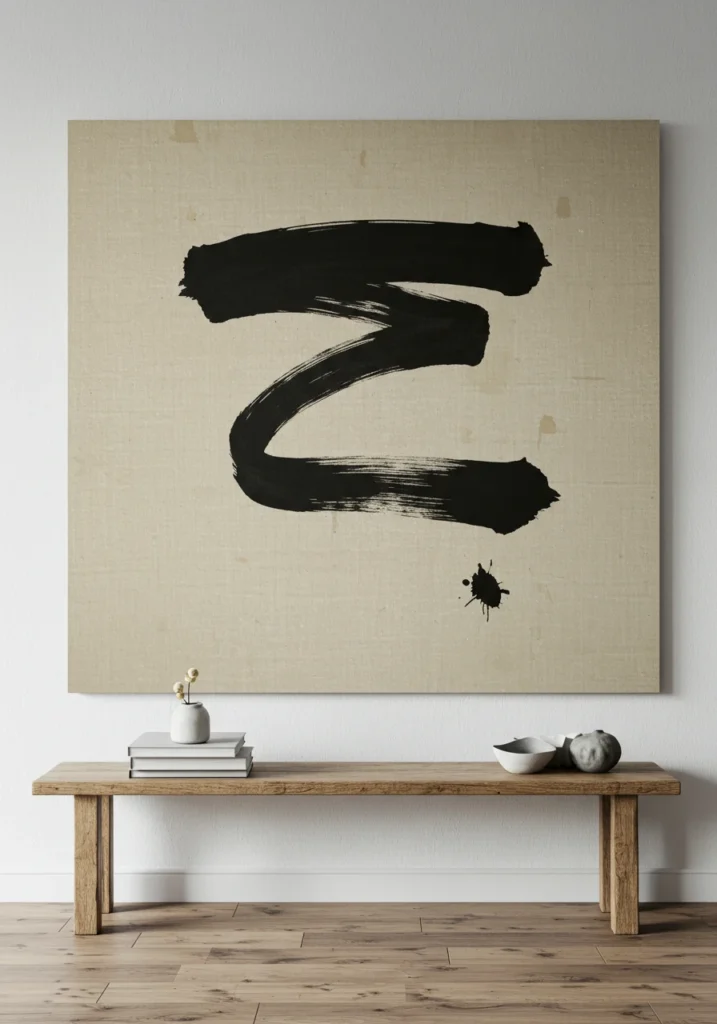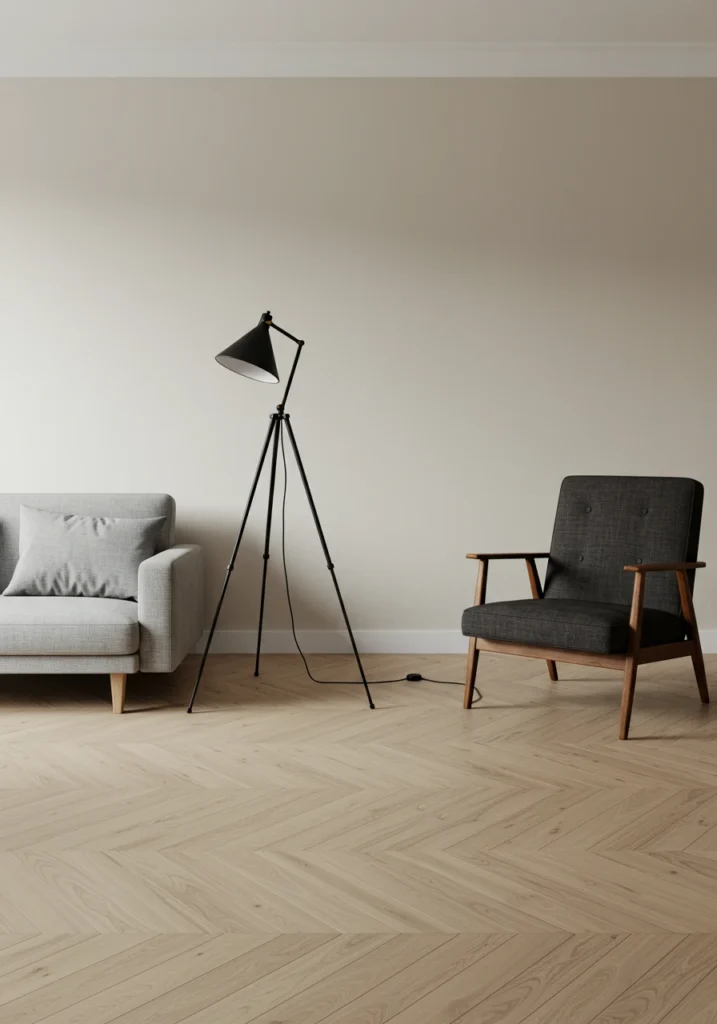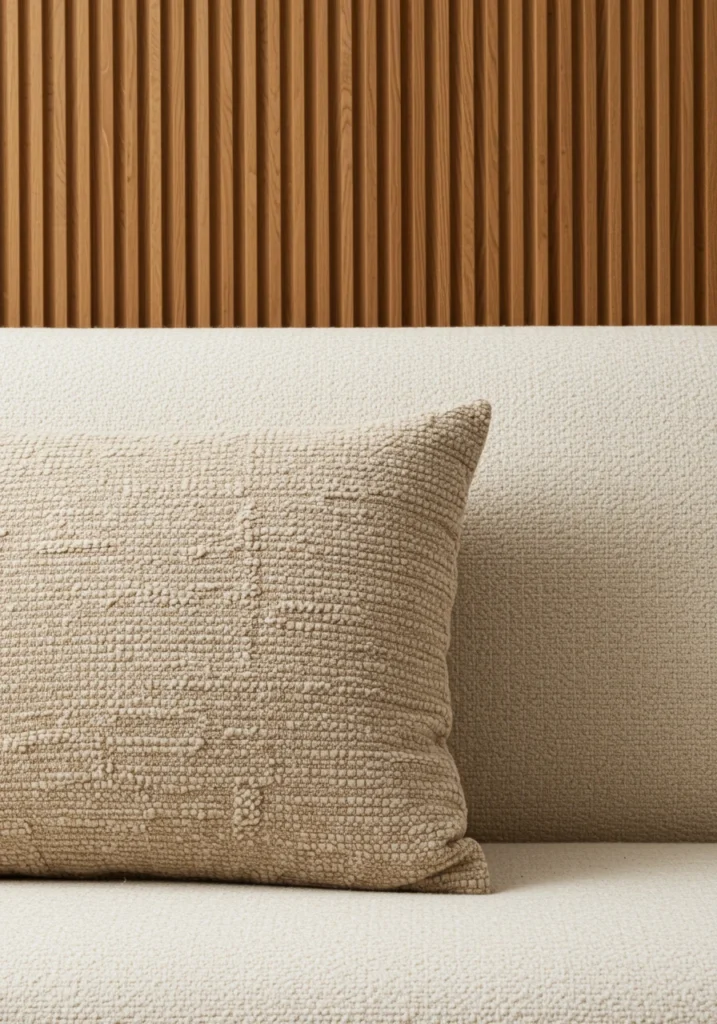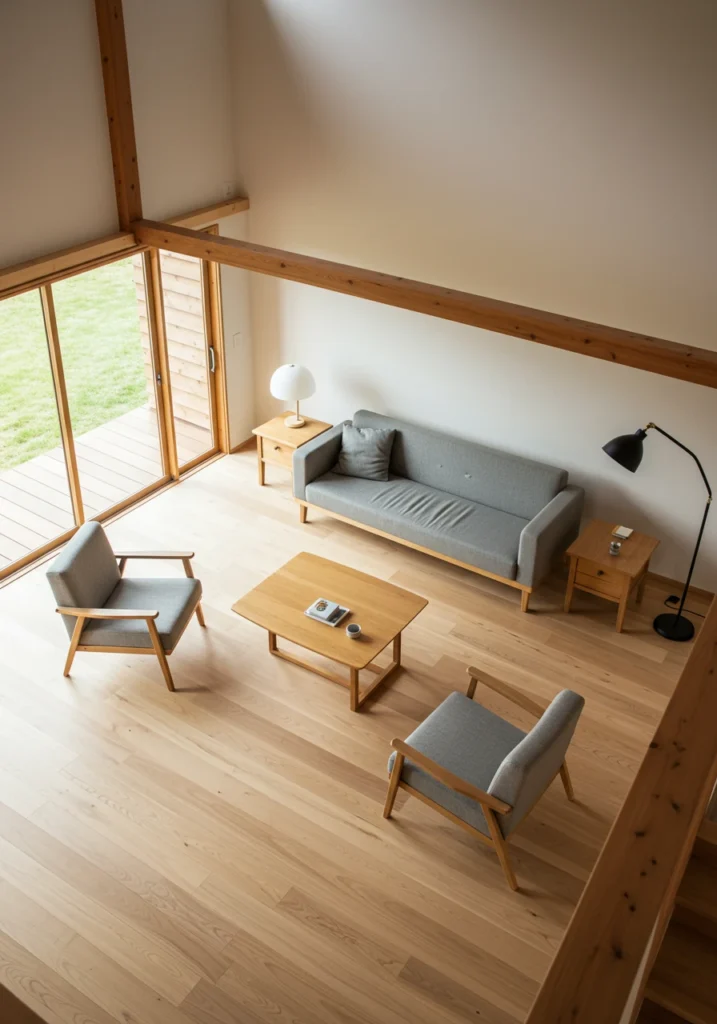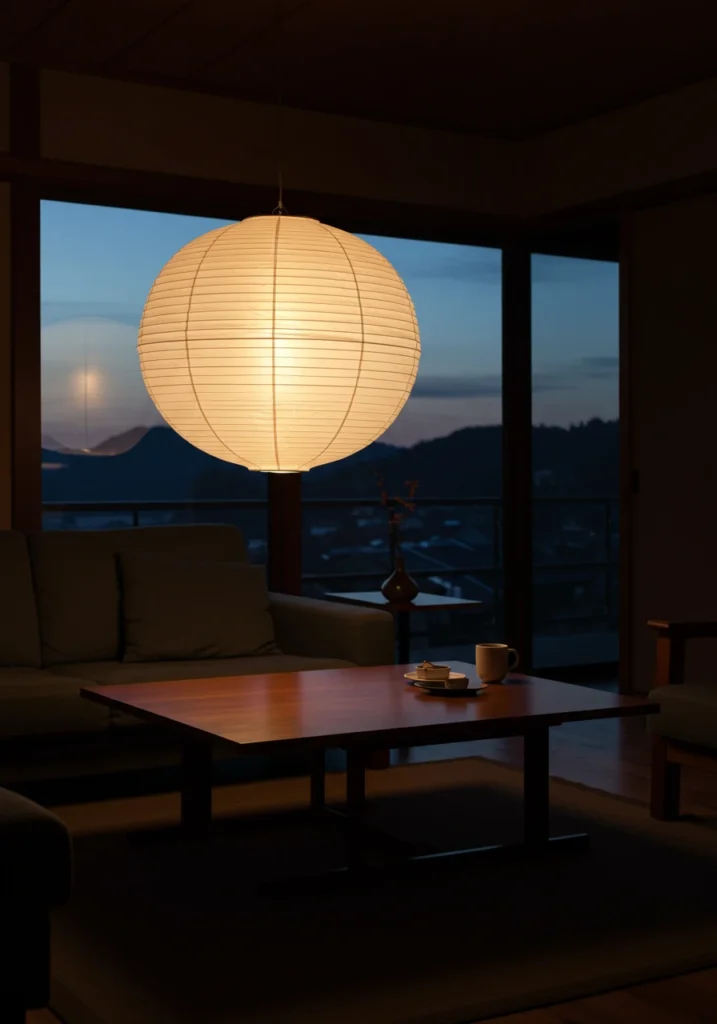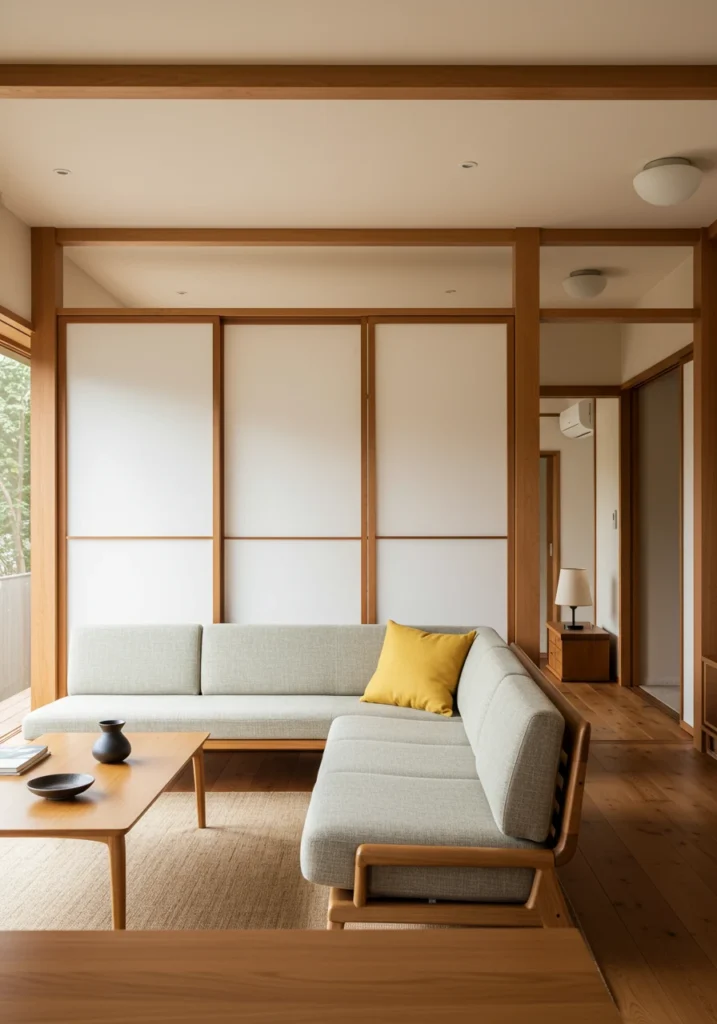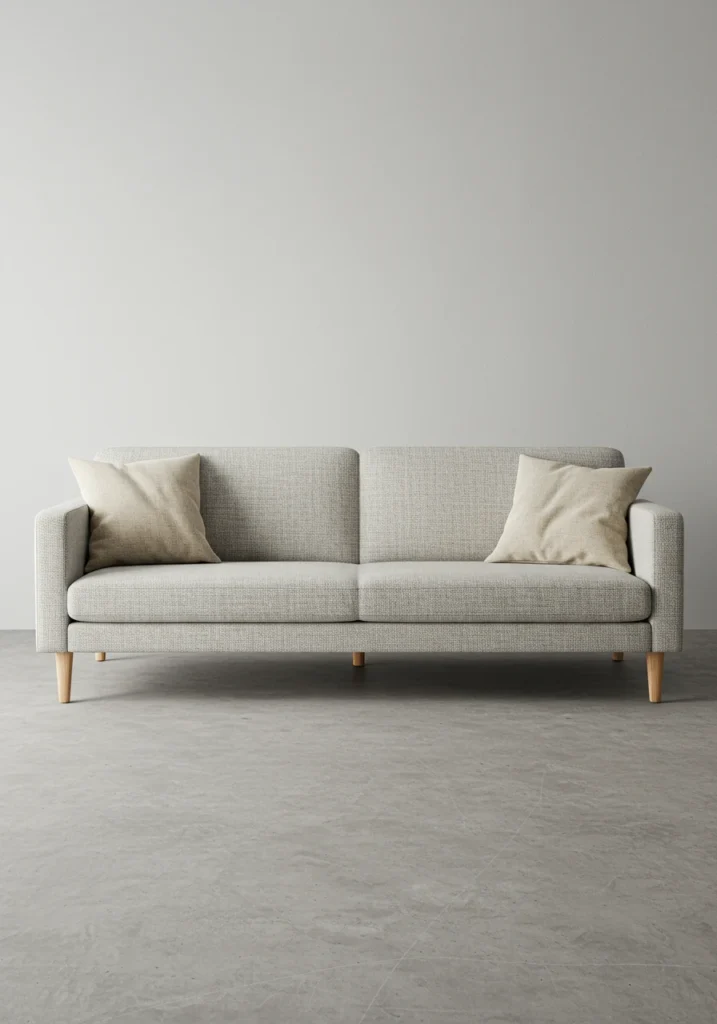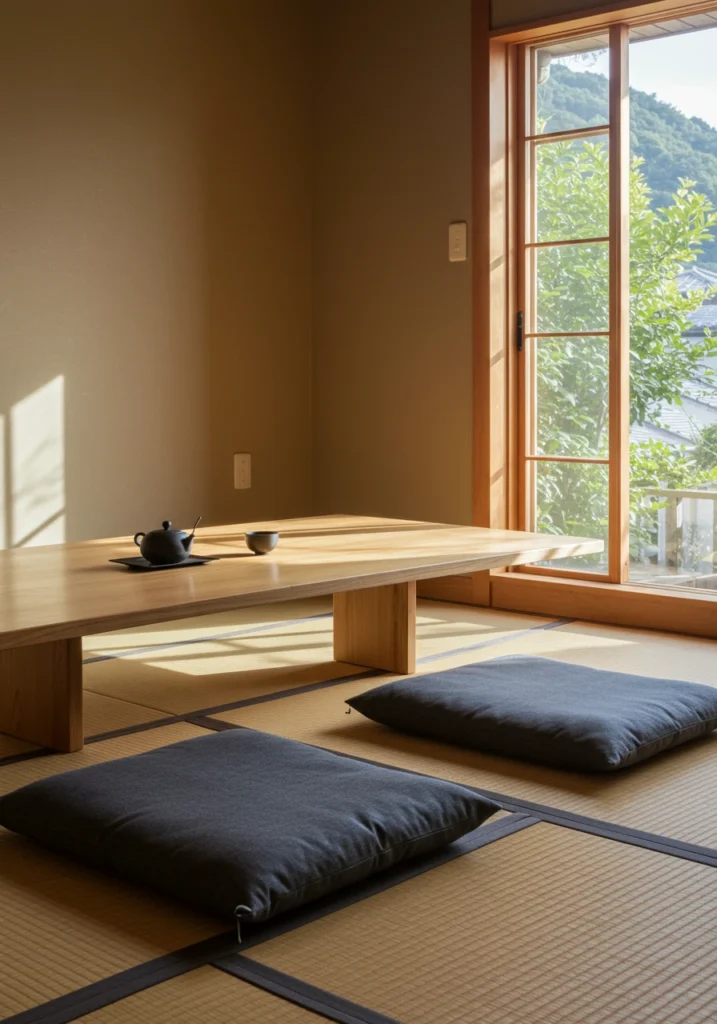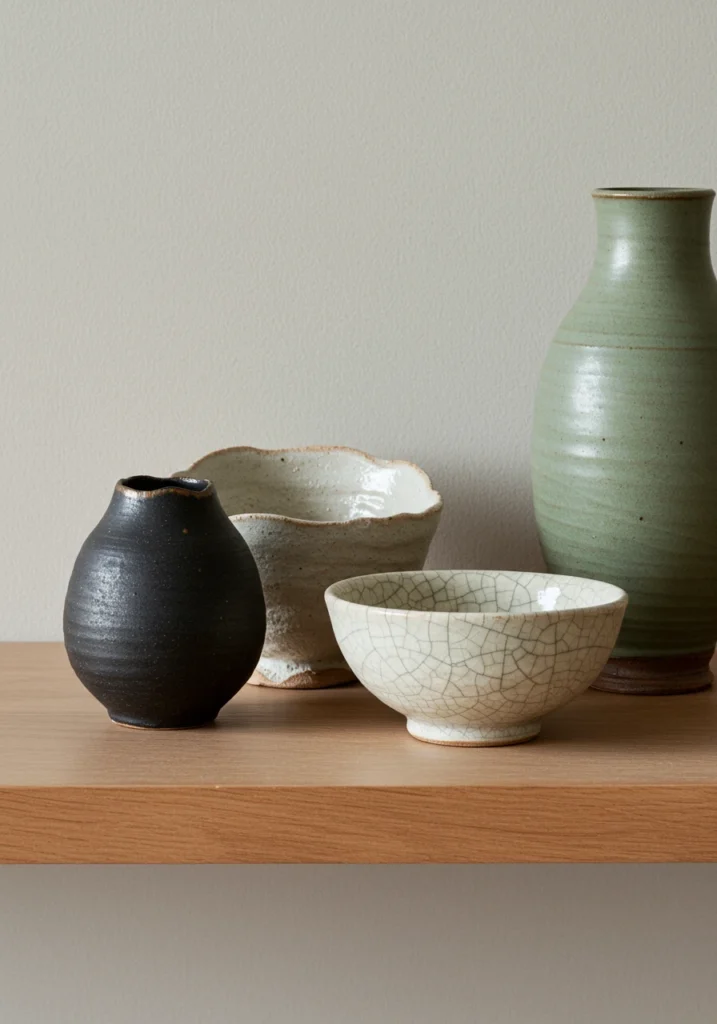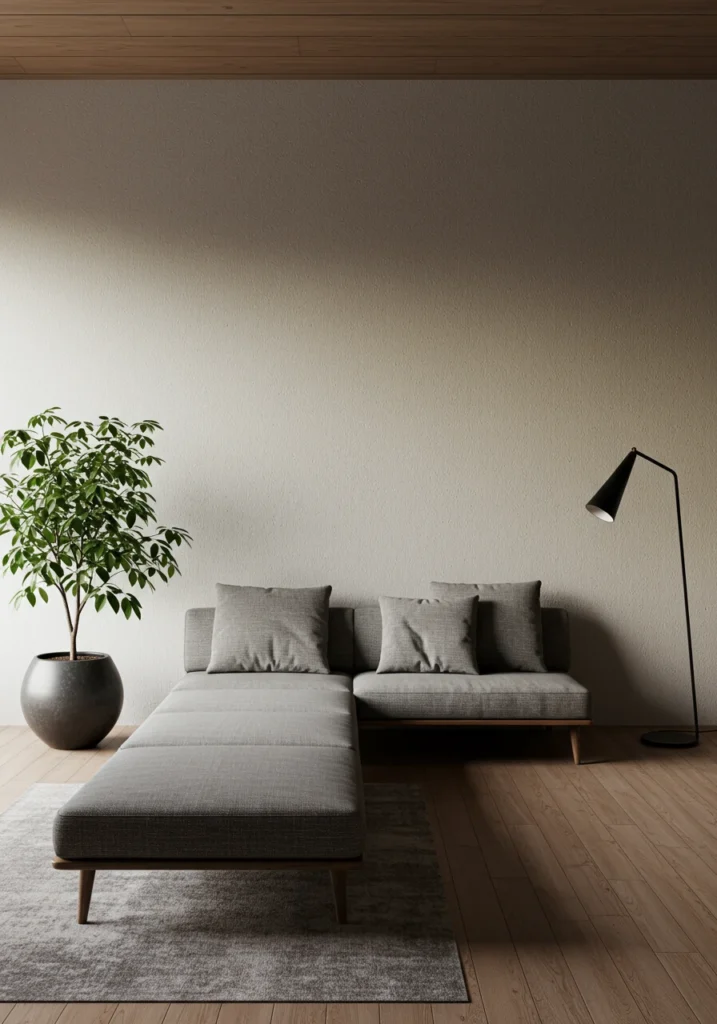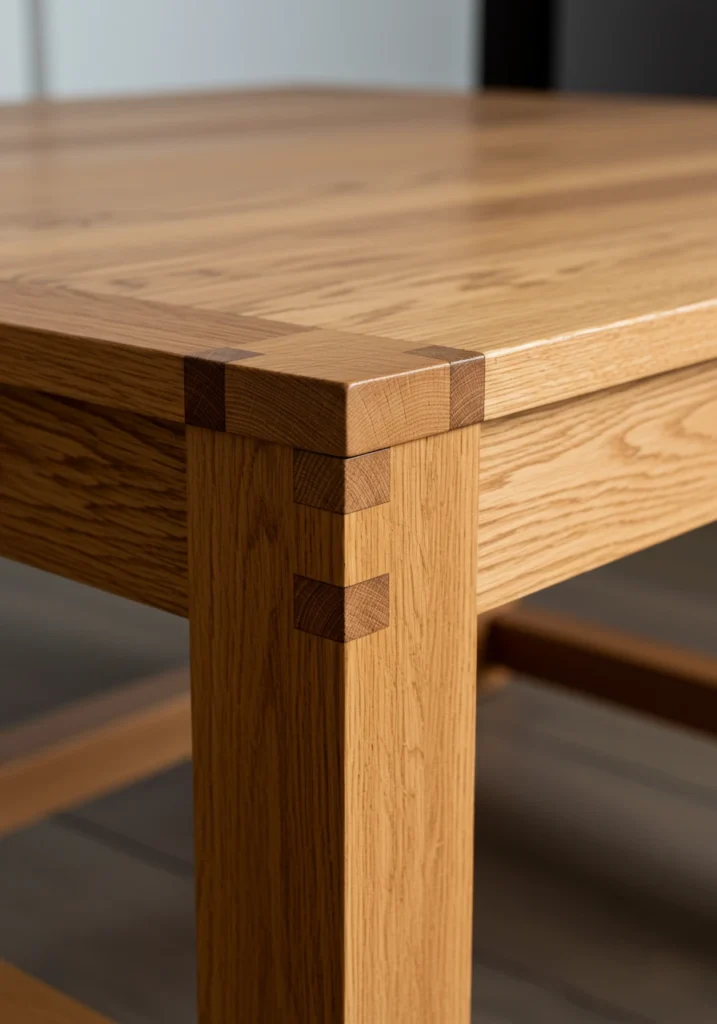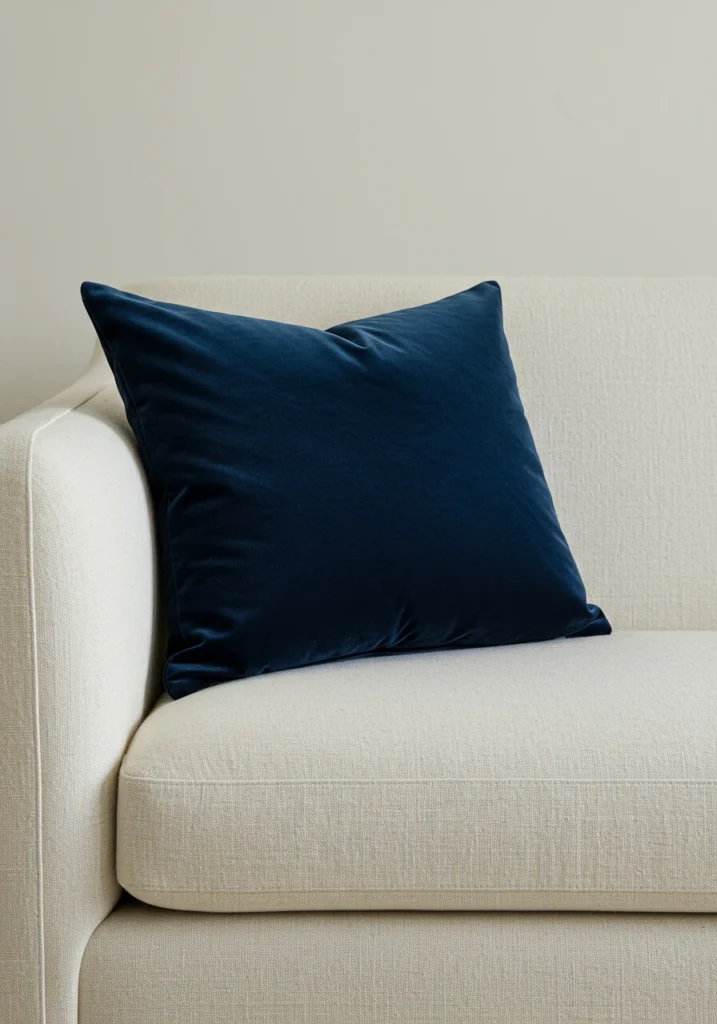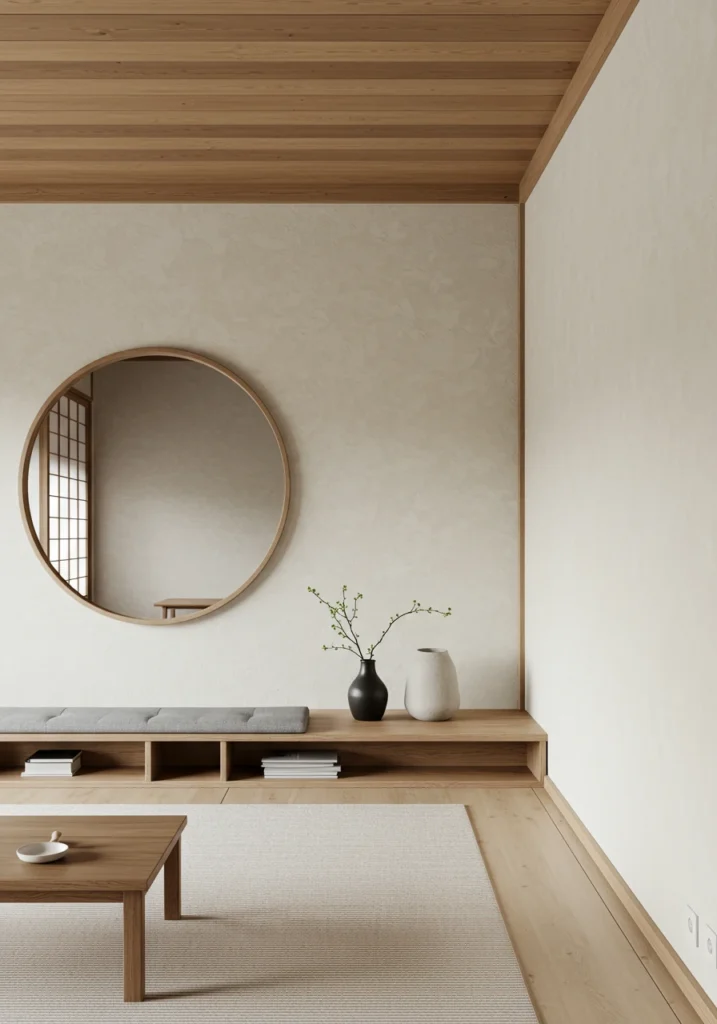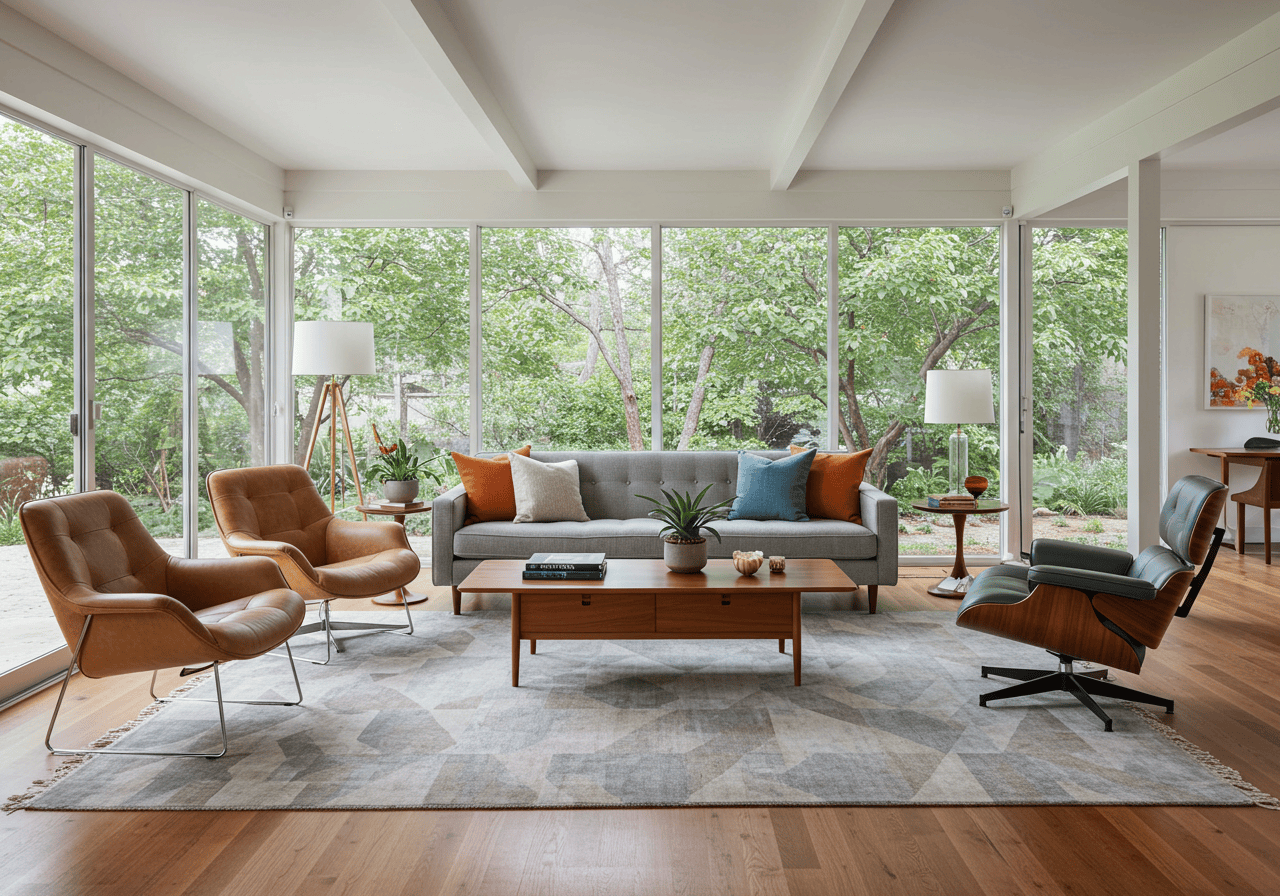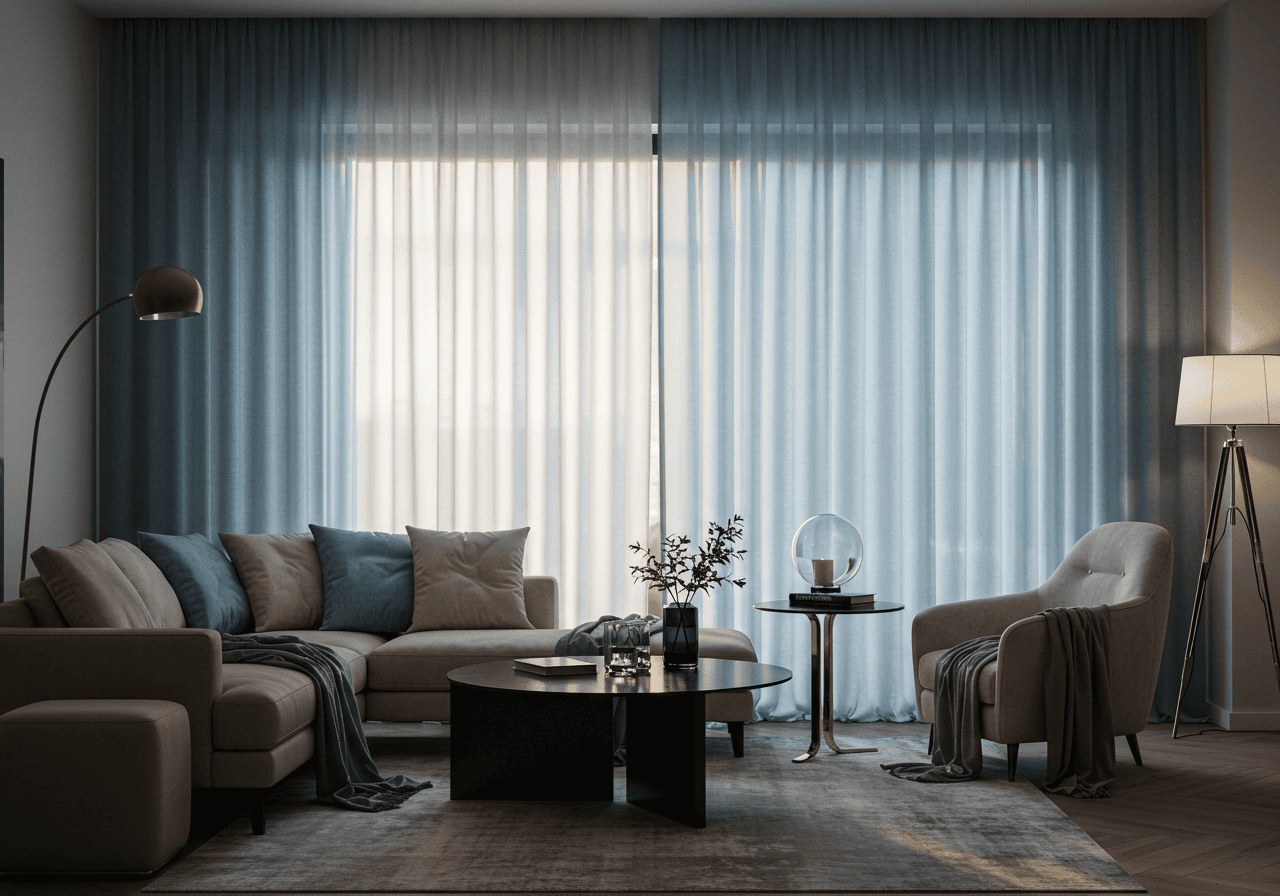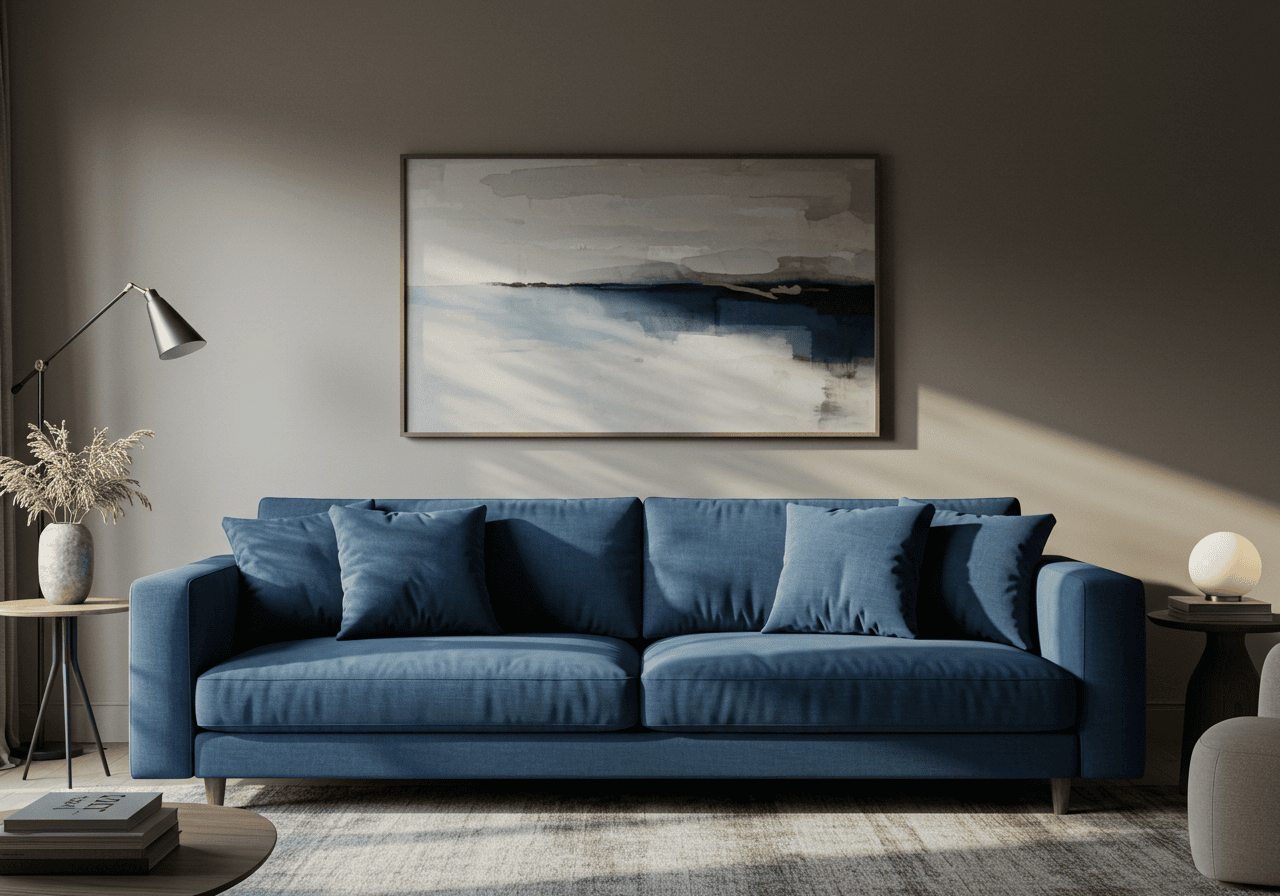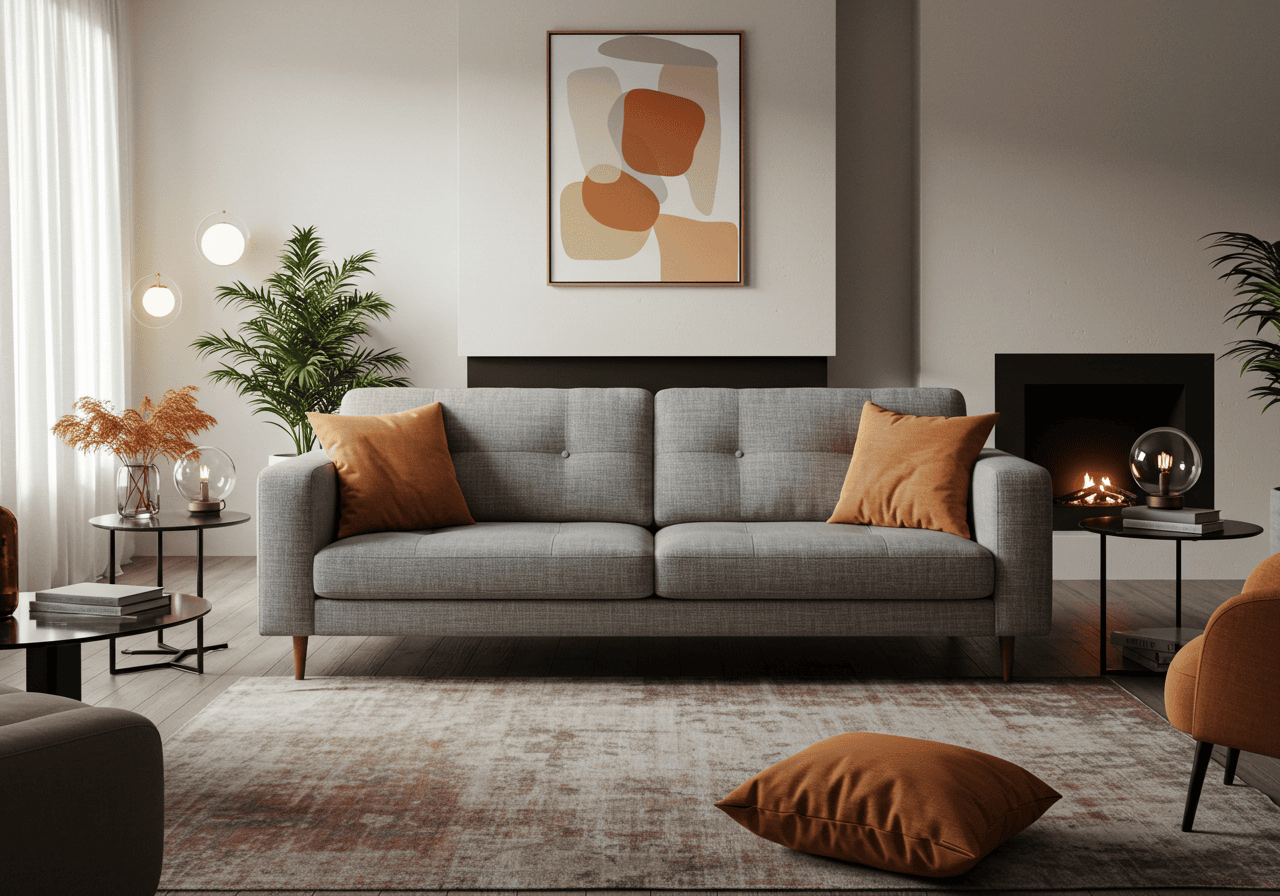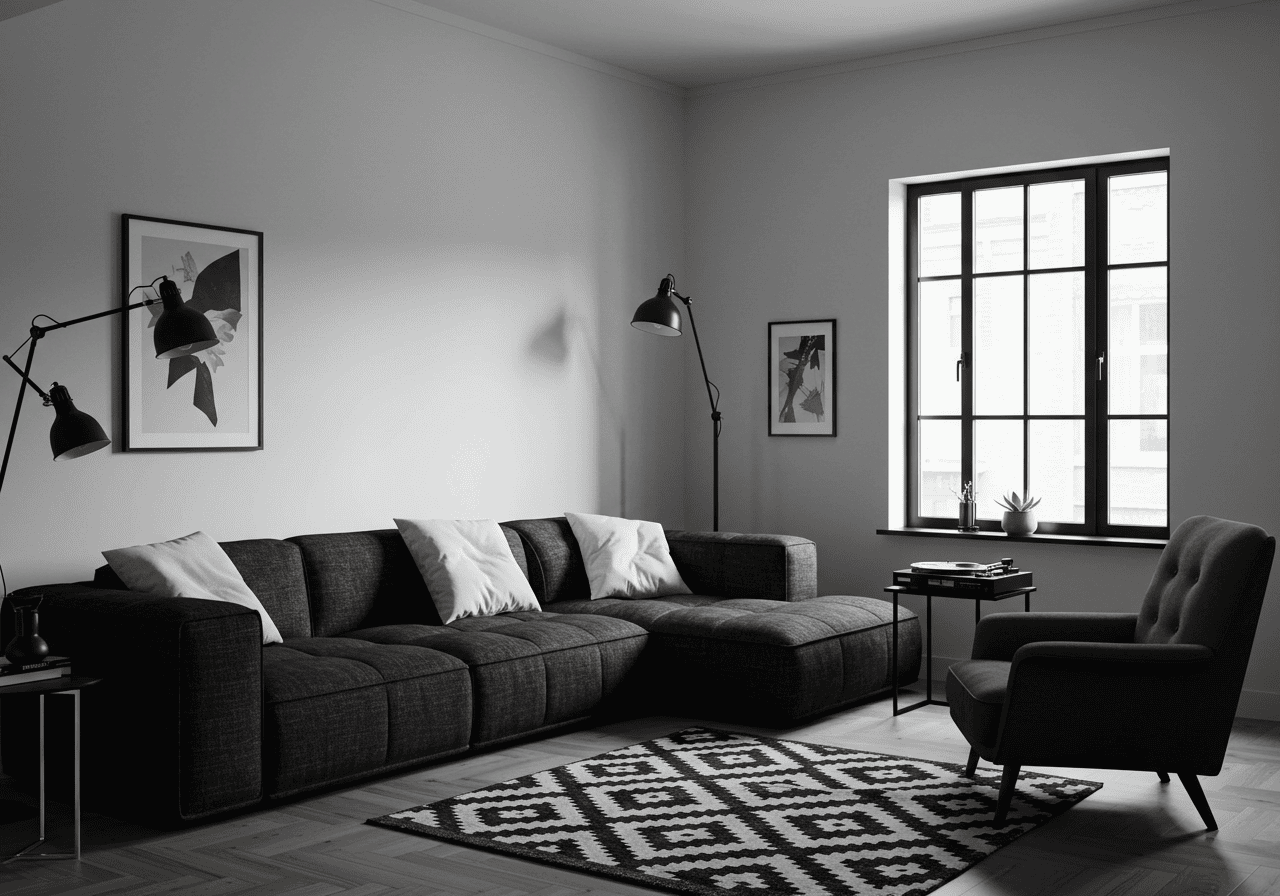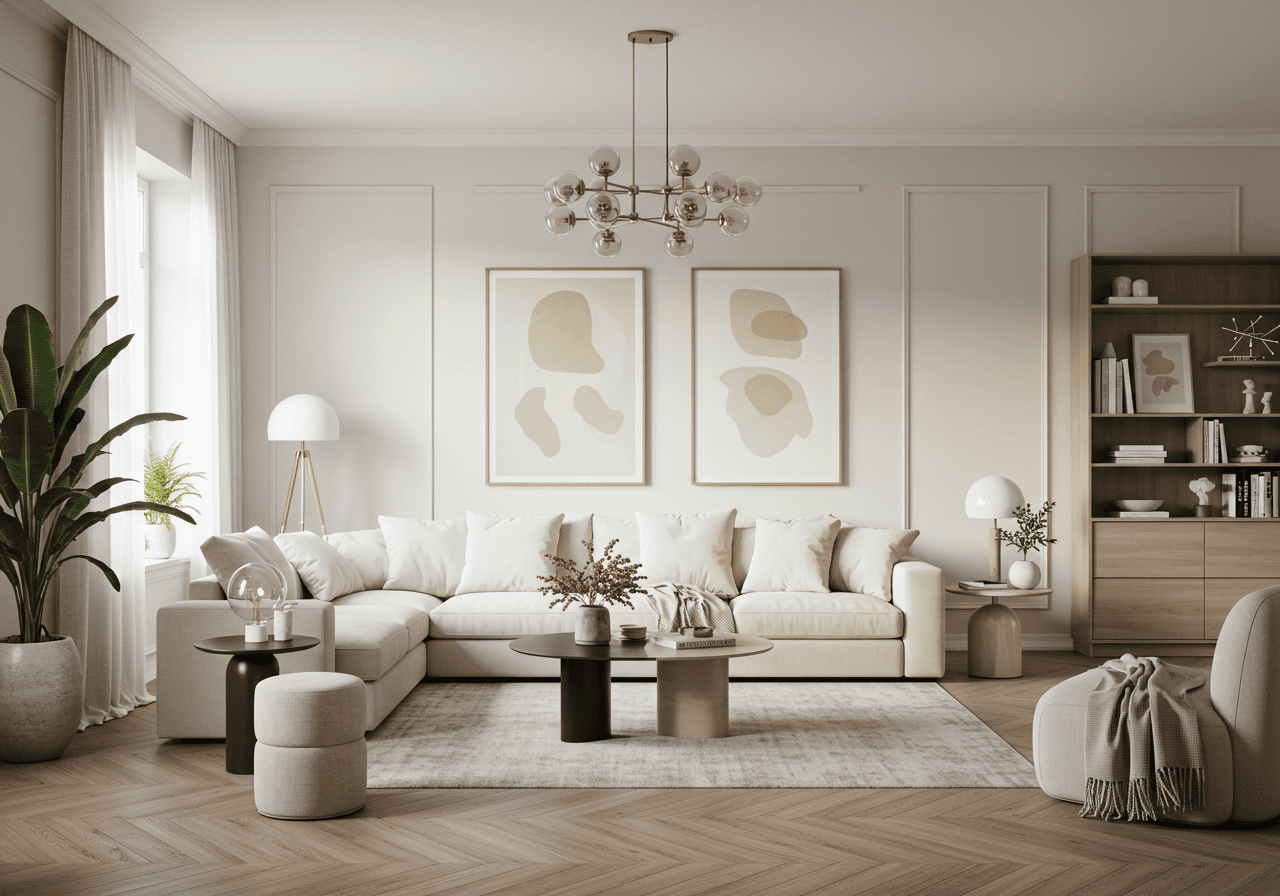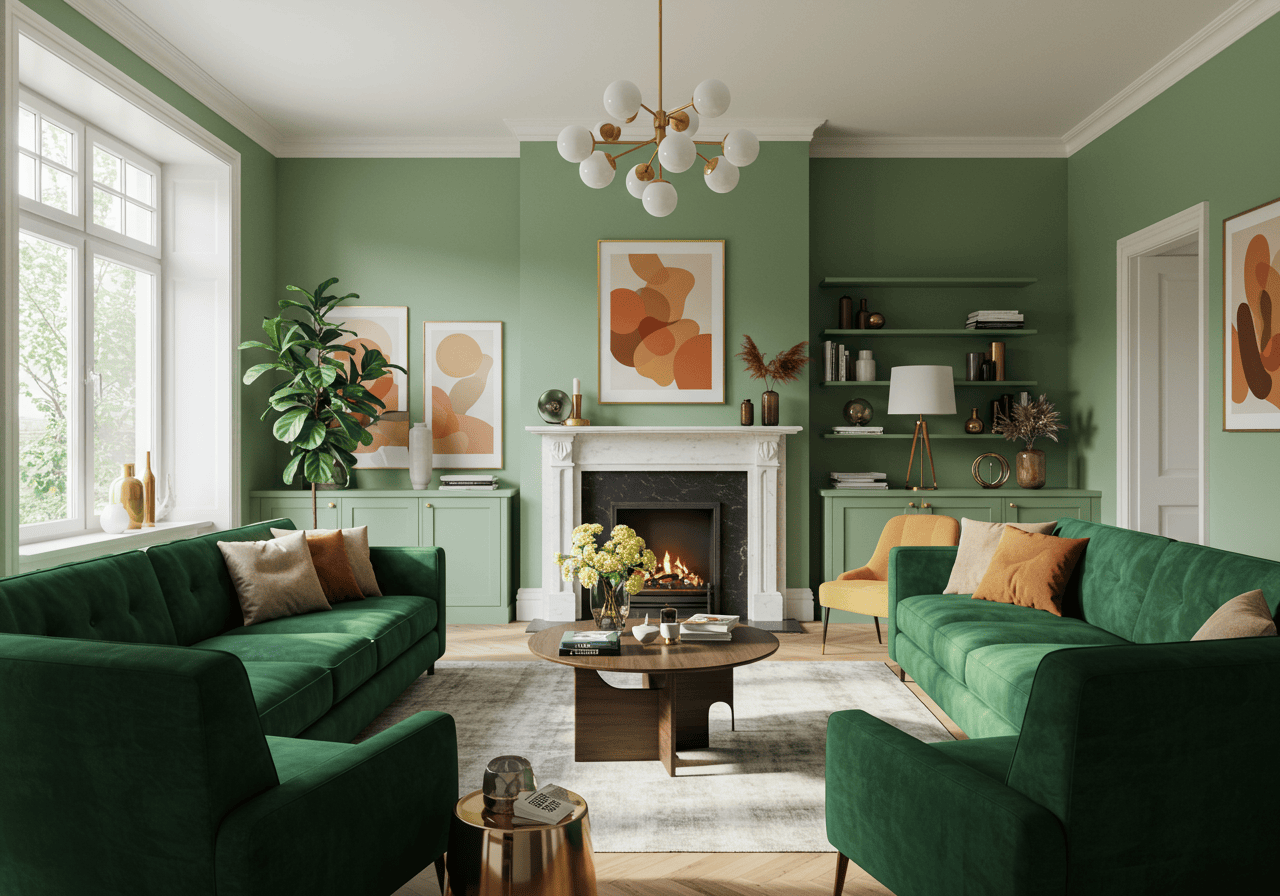Ever dream of a living room that feels like a warm, calming hug the moment you step inside? A space that’s beautifully simple yet full of soul? If you’re nodding along, then it’s time to fall in love with Japandi design.
This stunning style is the perfect marriage of two design philosophies: the rustic minimalism of Japanese wabi-sabi and the cozy functionality of Scandinavian hygge. Japandi is all about creating a serene, uncluttered, and deeply personal sanctuary. It values natural materials, celebrates imperfection, and finds beauty in simplicity.
Forget fleeting trends—this is a timeless look that brings peace and harmony into your home. Ready to transform your living room into a tranquil retreat? Here are 21 inspiring Japandi living room ideas to get you started.
1. Ground Your Space with Natural Materials
The heart and soul of Japandi design lie in its deep respect for nature. This isn’t about shiny, manufactured perfection; it’s about bringing the organic, tactile beauty of the outdoors in. Think of furniture and decor made from materials that tell a story.
Start with a foundation of light-toned woods like oak, ash, or maple, which are staples in Scandinavian design. Then, layer in textures from Japanese tradition, such as bamboo screens, rattan chairs, or paper lanterns. These elements not only add visual warmth but also connect your space to the natural world, creating an instant sense of calm.
- Focus on Furniture: Opt for a solid wood coffee table with clean lines, a simple rattan accent chair, or floating shelves made from reclaimed timber.
- Weave in Textiles: Choose natural fibers like linen, cotton, wool, and jute for your sofa, cushions, and rugs.
- Small Details, Big Impact: Incorporate smaller decor items like woven baskets for storage, stone coasters, or a simple clay vase.
This focus on raw, honest materials is a beautiful way to build a layered, inviting room. It shares a common thread with the warmth found in a rustic modern living room, where a love for natural texture is also paramount.
2. Master the Muted, Earthy Palette
Color in a Japandi living room is all about creating a tranquil atmosphere. The palette is typically soft, muted, and pulled directly from nature. This isn’t the place for bright, jarring hues. Instead, you’ll find a harmonious blend of neutral tones that promote relaxation and peace.
Think of a calming landscape: the soft white of clouds, the warm beige of sand, the gentle gray of stones, and the rich brown of soil. These colors create a perfect, serene backdrop for your carefully chosen furniture and decor.
- The Foundation: Use shades of off-white, cream, mushroom, or oatmeal for your walls to create a bright and airy feel.
- Add Depth with Contrast: Introduce subtle contrast with darker, earthy tones like charcoal gray, olive green, or a deep terracotta. This is often done through accent pieces, a single feature wall, or statement furniture.
- Black is Your Friend: A touch of black is essential in Japandi design. It acts as an anchor, grounding the space and adding a sophisticated, graphic element. Use it for window frames, slender lamp bases, or minimalist artwork.
A beautiful beige couch living room is a fantastic starting point for building this serene and sophisticated color story.
3. Embrace ‘Wabi-Sabi’: The Art of Imperfection
One of the most profound and beautiful principles of Japandi design is the Japanese concept of wabi-sabi. This worldview celebrates the beauty in imperfection, transience, and authenticity. It’s about finding charm in an object that is handmade, aged, or has a unique flaw.
In your living room, this means moving away from mass-produced, flawless items and towards pieces with character and soul. A wabi-sabi approach makes your home feel lived-in, personal, and deeply comforting. It’s a reminder that true beauty isn’t about being perfect.
- Handmade Decor: Seek out handcrafted ceramics with irregular shapes, hand-blown glass, or a hand-knotted wool rug.
- Aged Finishes: Don’t be afraid of a coffee table with a slight crack, a vintage wooden stool with a worn patina, or a piece of decor with a naturally weathered finish.
- Organic Shapes: Choose objects that aren’t perfectly symmetrical. Think of a lumpy, hand-woven cushion, a live-edge wood shelf, or a vase with a slightly uneven glaze.
This appreciation for characterful, time-worn pieces is a cornerstone of creating a home that feels both authentic and stylish, much like in many rustic living room ideas.
4. Layer in ‘Hygge’ for Ultimate Coziness
While the Japanese side of Japandi brings minimalism and wabi-sabi, the Scandinavian influence introduces hygge—that wonderful feeling of coziness, contentment, and well-being. This is what turns a beautifully designed room into a truly inviting home. Hygge is all about comfort, warmth, and creating a space where you can unwind and feel safe.
In a Japandi living room, hygge is achieved through soft, tactile layers and thoughtful comforts. It’s the perfect balance to the minimalist structure, ensuring the space feels warm and welcoming, not cold or stark.
- Plush Textiles: Drape a chunky-knit wool throw over your sofa or armchair. Layer a soft, high-pile sheepskin rug over your main jute rug for a cozy spot for your feet.
- Warm, Ambient Lighting: Ditch the harsh overhead lights. Instead, use multiple sources of warm, soft light, such as a floor lamp with a paper shade, a dimmable table lamp, or candles (real or flameless).
- Comfort is Key: Choose a sofa with deep, comfortable cushions you can sink into. Add plenty of plush pillows in different textures like boucle, linen, and wool.
Infusing your home with these cozy elements is a hallmark of great Scandinavian living room design and the key to making Japandi style so livable.
5. Opt for Low-Profile, Functional Furniture
Japandi design prioritizes a connection to the earth, and this is beautifully reflected in its choice of furniture. Pieces are often low-slung and grounded, creating a sense of stability and calm. This design choice opens up the vertical space in a room, making it feel more airy and spacious.
Functionality is just as important as form. Every piece of furniture should have a clear purpose, blending seamlessly into the space without demanding attention. Look for clean lines, simple silhouettes, and an absence of fussy ornamentation.
- Grounded Seating: Choose sofas and armchairs that sit low to the ground. Think platform-style couches or chairs with simple wooden legs.
- Minimalist Tables: A low, rectangular coffee table or a simple cluster of nesting side tables works perfectly. Avoid bulky or overly decorative designs.
- Hidden Storage: Opt for sleek media consoles or sideboards that hide clutter behind simple, unadorned doors.
This focus on clean lines and purposeful design shares a kindred spirit with the iconic pieces found in a mid-century modern living room, where simplicity and function reign supreme.
6. Declutter with Purpose for a Serene Mind
At its core, Japandi is a minimalist style. This isn’t about getting rid of everything you own, but rather about living intentionally with only the things you truly love or need. The Japanese concept of Kanso—which means simplicity or elimination of clutter—is central here.
A decluttered space leads to a decluttered mind. By carefully curating your living room, you create a visual sense of peace that allows you to fully relax. Every object should have its own place and its own purpose, contributing to the overall harmony of the room.
- The “One In, One Out” Rule: For every new item you bring into the room, consider letting go of something else.
- Smart Storage Solutions: Use woven baskets, minimalist cabinets, and built-in storage to keep everyday essentials out of sight.
- Curate Your Surfaces: Instead of filling shelves and tables with knick-knacks, choose one or two meaningful objects to display. Let the empty space around them become part of the decor.
This “less is more” philosophy is especially powerful and essential when crafting beautiful living room designs for small spaces, where every inch counts.
7. Maximize Natural Light with Sheer Window Treatments
Both Japanese and Scandinavian design revere natural light. It makes a space feel larger, cleaner, and more connected to the outdoors. In a Japandi living room, the goal is to welcome in as much sunlight as possible, creating a bright and uplifting atmosphere.
Avoid heavy, dark, or ornate window treatments that block the light and weigh down the room. Instead, opt for materials that diffuse the light gently, casting a soft, ethereal glow throughout your space.
- Choose Sheer Fabrics: Linen, cotton voiles, or simple sheer curtains in neutral colors like white, beige, or light gray are ideal.
- Natural Materials: Consider woven bamboo ormatchstick blinds. They offer privacy while still allowing dappled light to filter through, creating beautiful patterns.
- Keep it Simple: A single, clean curtain rod in black or a natural wood finish is all you need. Forget elaborate valances or tie-backs.
Finding the right balance of light and privacy is key, and there are many beautiful curtains ideas for living room that align perfectly with the Japandi aesthetic.
8. Introduce a Single, Sculptural Plant
While some design styles embrace a “jungle” of houseplants, Japandi takes a more restrained approach. Biophilic design is still essential, but it’s about quality over quantity. Instead of filling your room with many small plants, choose one or two larger, statement plants with an interesting, sculptural form.
This single touch of green acts as a living piece of art. It brings life, purifies the air, and adds an organic element that reinforces the connection to nature, all without creating visual clutter.
- Think Sculptural: A Fiddle Leaf Fig, a minimalist bonsai tree, a graceful olive tree, or a snake plant with its strong vertical lines are all excellent choices.
- The Perfect Pot: The container is just as important as the plant. Choose a simple pot made from natural materials like ceramic, stone, or terracotta in a neutral, earthy tone.
- Strategic Placement: Place your plant where it can get the light it needs and where its shape can be fully appreciated—perhaps in an empty corner or next to a simple armchair.
Incorporating nature thoughtfully is a key principle for creating a balanced and harmonious environment, a concept central to a well-designed feng shui living room.
9. Choose Art with Intention and Meaning
Art in a Japandi living room is never an afterthought; it’s a deliberate, meaningful choice. The goal is to select pieces that evoke a sense of calm and complement the room’s serene atmosphere. Avoid busy gallery walls or loud, chaotic prints.
Instead, focus on one or two impactful pieces. This could be a large abstract painting with simple forms and a muted palette, a piece of calligraphy, or a nature-inspired photograph. The artwork should add a touch of personality and soul without overwhelming the space.
- Embrace Abstraction: Simple geometric shapes, brush strokes, and line art work beautifully.
- Look to Nature: Prints of landscapes, botanical drawings, or close-ups of natural textures are perfect.
- Frame Simply: Use minimalist frames in natural wood or thin black metal to let the artwork speak for itself.
The curated, thoughtful selection of art is what elevates a space from simply decorated to truly personal, a goal shared by anyone creating an aesthetic living room.
10. Create Depth with High-Contrast Tones
While the overall Japandi palette is soft and neutral, it’s the thoughtful use of contrast that gives it depth and sophistication. The key is to balance the light, airy elements of Scandinavian design with the richer, darker tones often found in traditional Japanese interiors.
This contrast creates visual interest and prevents the neutral color scheme from feeling flat or boring. It’s a dynamic interplay between light and dark, soft and sharp.
- Dark Wood Accents: If your main furniture is light oak, introduce a side table, a decorative bowl, or a picture frame in a darker walnut or ebonized finish.
- Black as an Anchor: Use black in small, deliberate doses to ground the space. This could be through slender metal legs on a chair, a minimalist floor lamp, or the trim on a window.
- Textural Contrast: Pair a smooth, light-colored sofa with a dark, textured charcoal gray throw pillow.
This masterful use of light and dark to create a striking yet balanced space is a technique also seen in the most stunning black and white living room designs.
11. Play with Subtle, Sophisticated Textures
When your color palette is restrained, texture becomes your best friend. It’s what adds warmth, depth, and sensory appeal to a Japandi living room. The goal is to layer a variety of subtle textures that invite you to touch and feel, making the space rich and engaging without adding visual clutter.
Think beyond just fabrics. Texture can be incorporated into your walls, furniture, and decor for a fully immersive, tactile experience.
- On the Walls: Consider a limewash or tadelakt finish for your walls to give them a soft, chalky texture. Fluted wood paneling on a feature wall can also add incredible depth.
- In Your Furniture: Look for pieces with interesting surface details, like a sideboard with reeded glass doors or a coffee table made from raw, weathered wood.
- Textile Layers: Mix different weaves and materials. Pair a smooth linen sofa with nubby boucle cushions, a jute rug, and a fine-knit cashmere throw.
This focus on high-quality materials and rich, subtle textures is a hallmark of an elevated space, bringing a touch of understated elegance reminiscent of a luxury living room.
12. Harness the Power of Negative Space
In Japandi design, the empty space—or “Ma” in Japanese culture—is just as important as the objects within it. Negative space is an active element of the design, not just a void to be filled. It gives your furniture and decor room to breathe, allowing each piece to be appreciated individually.
Resist the urge to fill every corner and cover every surface. By intentionally leaving areas open, you create a sense of calm, order, and spaciousness. It’s the ultimate expression of minimalist confidence.
- Allow for Breathing Room: Pull furniture slightly away from the walls. Don’t push everything into the corners.
- Mindful Curation: Instead of ten small decor items, choose three that you love. The space around them will make them feel more special.
- Clear Pathways: Ensure there is a clear and easy flow of movement through the room. This enhances the feeling of openness.
This intentional use of space to create a clean, uncluttered, and highly functional environment is a key principle in any well-executed contemporary living room.
13. Illuminate with Iconic Paper Lanterns
For lighting that is both functional and beautiful, look no further than the classic paper lantern. These fixtures, inspired by Japanese Akari light sculptures, are a perfect fit for the Japandi aesthetic. Made from washi paper and often supported by a delicate bamboo or metal frame, they cast a warm, soft, and beautifully diffused glow.
This gentle illumination is key to creating that cozy hygge atmosphere in the evenings. A paper lantern is more than just a light source; it’s a floating sculpture that adds a touch of organic elegance and artistry to your living room.
- Vary the Shapes and Sizes: Group a few small pendants together over a corner, or use a single, large lantern as a stunning centerpiece above your seating area.
- Floor Lamp Options: Look for floor lamp versions with a similar paper shade design to add a warm glow to a reading nook.
- Embrace Simplicity: The beauty of these lanterns is in their simple, organic forms. Let them be the star without any competing fixtures nearby.
14. Divide the Space with Elegant Screens
Inspired by traditional Japanese interiors, Shoji-style screens are a brilliant way to add architectural interest and functionality to your Japandi living room. These elegant dividers can be used to section off a larger space, create a cozy nook, or simply act as a beautiful decorative backdrop.
Typically made from a light wood frame with translucent paper panels, these screens partition a room without completely blocking light or sight. They add a layer of texture and a graphic, linear element that is quintessentially Japandi.
- Create Zones: Use a folding screen to visually separate your living area from a home office or dining space in an open-plan home.
- As a Wall Accent: Place a screen flat against a plain wall to add texture and depth, much like a piece of large-scale art.
- Modern Interpretations: Look for modern versions that use frosted glass or fabric panels instead of paper for a more durable, contemporary twist.
15. Anchor the Room with a Simple, Clean-Lined Sofa
The sofa is often the largest piece of furniture in the living room, so it’s crucial that it aligns with Japandi principles. Steer clear of overstuffed, ornate, or overly trendy designs. Instead, choose a sofa with a simple silhouette, clean lines, and understated elegance.
Comfort is, of course, paramount. Look for quality craftsmanship and durable, natural upholstery. The sofa should be an inviting haven for relaxation, but its form should remain disciplined and uncluttered.
- Neutral Upholstery: Choose fabrics in shades of gray, beige, cream, or charcoal. These colors are versatile and create a calming foundation.
- Exposed Legs: Sofas with simple wooden or thin metal legs feel lighter and less bulky, enhancing the room’s airy feel.
- Function Over Frills: Opt for a straightforward design. A simple track arm or armless style works beautifully. Avoid fussy details like tufting, prominent nailheads, or ruffled skirts.
A neutral, well-structured sofa is incredibly versatile. For more inspiration on styling a foundational piece, check out these stunning grey sofa living room ideas.
16. Integrate Low, Organic Seating
Deepen the connection to the earth by incorporating seating options that are close to the ground. This practice, common in Japanese culture, fosters a sense of groundedness and intimacy in your living space. It’s a wonderful way to create a more relaxed and informal atmosphere for conversation and contemplation.
Beyond your main sofa, think about adding floor-level seating that is both comfortable and aesthetically pleasing. This encourages a different kind of gathering, one that feels more communal and serene.
- Zabuton Cushions: These traditional Japanese floor cushions are perfect for extra seating. Choose ones with simple linen or cotton covers in earthy tones.
- Textured Poufs: A large, low-slung pouf made of jute, wool, or leather can serve as an ottoman, a side table, or an extra seat.
- Low Benches: A simple wooden bench placed against a wall or under a window provides seating without adding visual bulk.
17. Use Ceramics as Artful Accents
Handcrafted ceramics are the jewels of a Japandi living room. They embody the wabi-sabi principle of finding beauty in imperfection and are a tangible link to both Japanese and Scandinavian craft traditions. Use pottery not just for its function, but as small, sculptural works of art that add character and soul to your space.
Look for pieces with interesting glazes, organic shapes, and a tangible, handmade quality. A small collection of carefully chosen ceramics can tell a story and add a layer of quiet sophistication to your shelves or coffee table.
- Vases and Vessels: Display a single, dramatic branch in a tall, narrow-necked vase, or leave a beautifully shaped vessel empty as a purely sculptural object.
- Bowls and Trays: A shallow ceramic bowl can hold keys on an entryway console, or a simple stoneware tray can corral small items on your coffee table.
- Tea Sets: A simple, elegant Japanese-style teapot and cups can be left on display, hinting at the ritual of a quiet, mindful moment.
18. Embrace Asymmetry for Natural Balance
While many Western design styles strive for perfect symmetry, the Japandi aesthetic finds beauty in asymmetry (fukinsei). This principle, rooted in Japanese Zen philosophy, is about creating a more dynamic and natural-feeling balance. A perfectly symmetrical room can sometimes feel static and rigid; an asymmetrical layout feels more organic and alive.
Apply this concept to your furniture arrangement and decor. Instead of placing two identical lamps on either side of the sofa, try balancing the sofa with a floor lamp on one side and a small side table on the other.
- Furniture Layout: Arrange your seating in an L-shape rather than a perfect U-shape.
- Wall Decor: Instead of a single piece of art centered above the sofa, try hanging two different-sized pieces off-center.
- Shelf Styling: When arranging objects on a shelf, group items in odd numbers (threes or fives) and vary their height and shape to create a balanced but not symmetrical composition.
This thoughtful approach to balance is what makes a space feel both curated and effortlessly natural, a quality also cherished in a transitional living room.
19. Let Wood Grain Tell a Story
We’ve talked about using wood, but let’s go deeper. In Japandi design, the natural grain, knots, and unique patterns of the wood are not flaws to be hidden—they are the main event. Celebrating the inherent character of the material is a way of honoring nature and craftsmanship.
Choose furniture and finishes where the wood’s story is visible. This adds a layer of organic artistry that is impossible to replicate with manufactured materials. Look for details that highlight the way the piece was made.
- Visible Joinery: Look for furniture that showcases traditional woodworking techniques, like dovetail or mortise-and-tenon joints.
- Live-Edge Pieces: A coffee table or shelf with a natural “live edge” brings an untamed, organic shape into your room.
- Mixed Wood Tones: Don’t be afraid to mix light woods like ash or maple with richer, darker tones like walnut. A darker accent, perhaps a dark brown couch living room with light wood accents, can create a moodier, sophisticated take on Japandi.
20. Simplify Your Color Pops with Earthy Hues
A Japandi living room is predominantly neutral, but this doesn’t mean it has to be devoid of color. When color is introduced, it is done with intention and restraint. Forget bright, primary colors and instead draw inspiration from the natural world.
Think of deep, muted shades that add richness and depth without disrupting the room’s serene atmosphere. These subtle pops of color can be introduced through textiles, art, or a single piece of statement pottery.
- Earthy Greens: Shades of sage, olive, and moss green connect the space to nature and promote a feeling of tranquility. These tones can be found in a range of beautiful green living room ideas.
- Rich Blues: A deep indigo or slate blue, reminiscent of dyed fabrics or a stormy sea, can act as a sophisticated accent color.
- Warm Terracotta: The warm, earthy tones of terracotta, clay, or a muted rust can add a touch of warmth and coziness.
Unlike the bold palettes in some colorful living room ideas, Japandi color is used as a whisper, not a shout.
21. Cultivate Calm with Unadorned Walls
Finally, embrace the power of simplicity by keeping your walls largely unadorned. In a Japandi living room, the walls are not just a background; they are an integral part of the calm, uncluttered aesthetic. By resisting the urge to fill every vertical surface, you create a sense of spaciousness and tranquility.
This doesn’t mean your walls must be completely bare. A single, carefully chosen piece of art or a minimalist mirror is more than enough. The key is to allow for plenty of “negative space” to let the room breathe. For the ultimate serene foundation, consider a pure and simple backdrop, like those seen in classic white couch living room designs.
- Focus on Texture: Instead of color or patterns, add interest to your walls with texture. A limewash, plaster, or subtle grasscloth wallpaper can add depth without being distracting.
- One Statement Piece: If you hang art, let it be the single focal point of the wall.
- Play with Shadows: An unadorned wall becomes a canvas for the changing natural light throughout the day, creating a dynamic display of light and shadow.
Your Peaceful Sanctuary Awaits
Creating a Japandi living room is about more than just following a design trend; it’s about crafting a mindset. It’s a conscious choice to surround yourself with simplicity, nature, and intention. By blending the cozy comfort of hygge with the mindful minimalism of wabi-sabi, you can create a home that is not only beautiful but also a true sanctuary for the soul.
Start small, choose pieces you love, and remember to embrace the beauty of imperfection. Your journey to a more peaceful, serene living space begins now.

